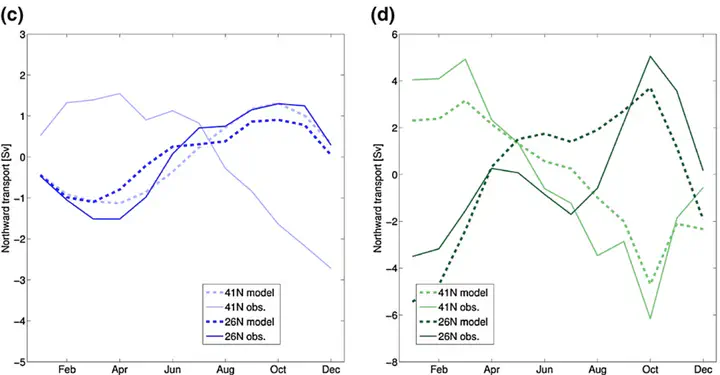 Mean annual cycle anomalies of observed (solid) and model (dashed) AMOC-Ekman and Sverdrup transport at 26°N (dark) and 41°N (light): (c) AMOC-Ekman annual cycle anomalies, (d) Sverdrup transport annual cycle anomalies.
Mean annual cycle anomalies of observed (solid) and model (dashed) AMOC-Ekman and Sverdrup transport at 26°N (dark) and 41°N (light): (c) AMOC-Ekman annual cycle anomalies, (d) Sverdrup transport annual cycle anomalies.Abstract
Time series of the observational estimate of the Atlantic meridional overturning circulation (AMOC) have recently become available, but so far, no contemporaneous relation has been documented between them. Here, we analyze the variability of the 26°N Rapid Climate Change programme (RAPID) and the 41°N Argo-based AMOC estimates on seasonal timescales, and we compare them to a simulation from a high-resolution National Centers for Environmental Prediction (NCEP)-forced ocean model. In our analysis of the observed time series, we find that the seasonal cycles of the non-Ekman component of the AMOC between 26°N and 41°N are 180-degrees out-of-phase. Removing the mean seasonal cycle from each time series, the residuals have a non-stationary covariability. Our results demonstrate that the AMOC is meridionally covariable between 26°N and 41°N at seasonal timescales. We find the same covariability in the model, although the phasing differs from the observed phasing. This may offer the possibility of inferring AMOC variations and associated climate anomalies throughout the North Atlantic from discontinuous observations.